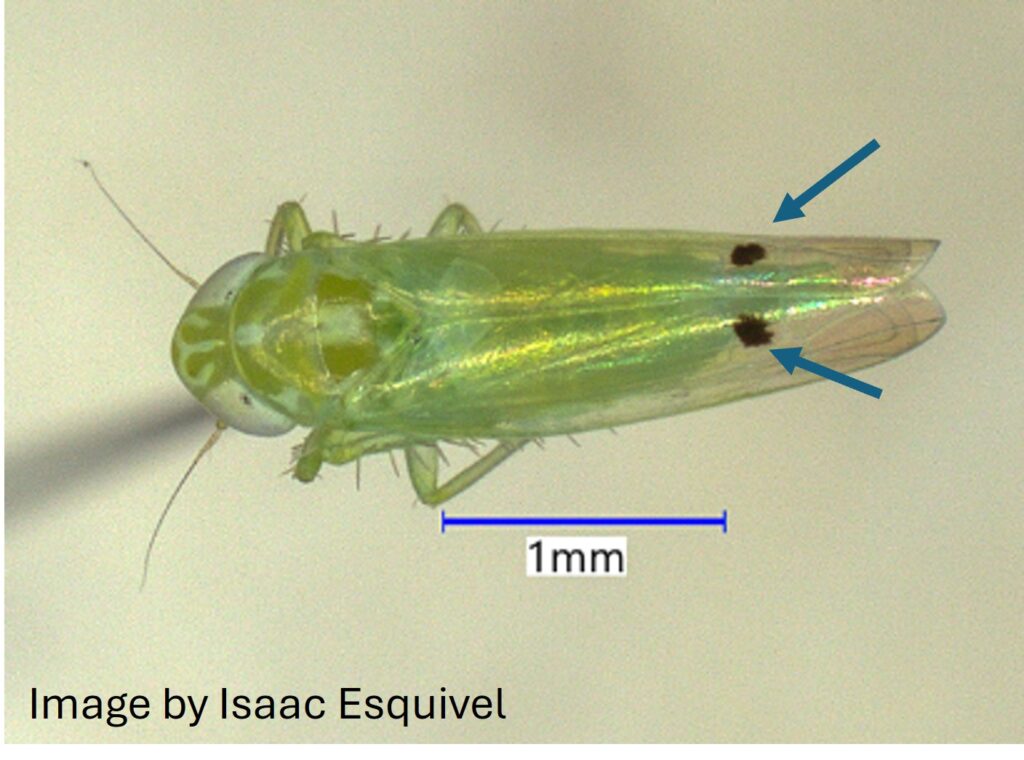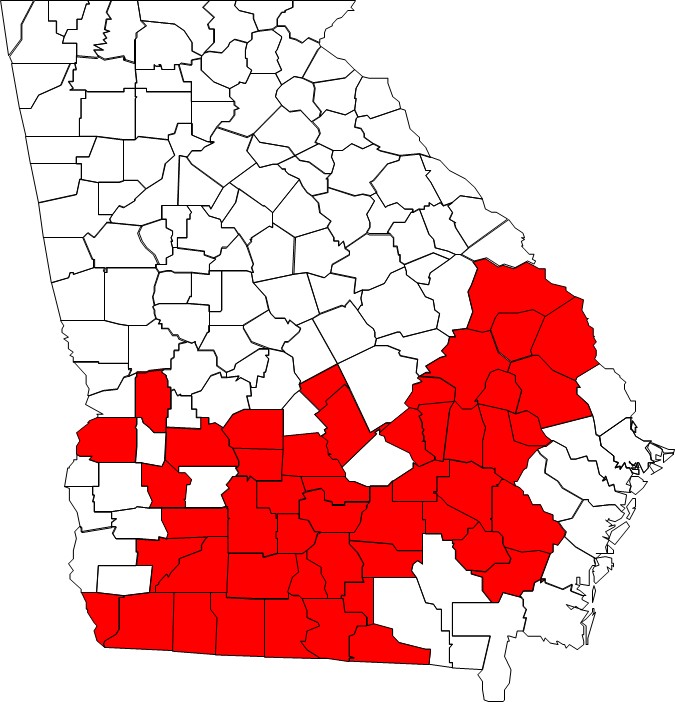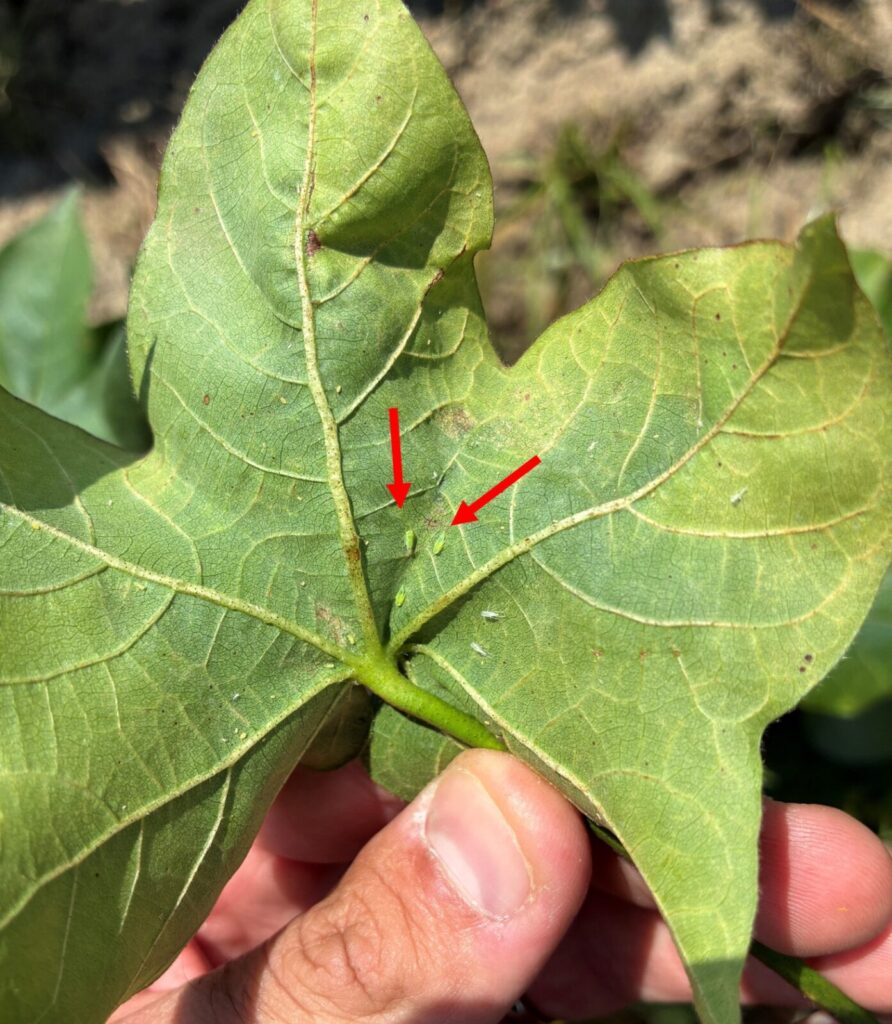
Cotton Jassid, Amrasca biguttula (Fig. 1), is native to the Indian subcontinent and has become an invasive pest in Georgia. It was first found in Florida and is gradually spreading throughout Georgia. Currently, it is present in many counties in the state (Fig. 2). Adults of the two-spot cotton leafhopper are small green insects with two dark spots on their wings (Fig. 1). As a significant pest, it causes over 50% crop loss in cotton and poses a serious threat to hibiscus in ornamental nurseries. We have observed infestations in at least one retail nursery in South Georgia.

They colonize the underside of the leaves (Fig. 3) and feed on the cells. The feeding damage immediately turns the leaves from green to brown, as if they were burned (Fig. 4). This feeding symptom is commonly called ‘hopperburn.”
Based on trials on cotton, active ingredients, such as bifenthrin (e.g., Talstar P), thiamethoxam (e.g., Flagship 25WG), flupyradifurone (Altus), flonicamid (Aria), afidopyropen (Ventigra), buprofezin (Talus), and sulfoxaflor + spinetoram (XXpire) are effective. University colleagues and county agents conducted these trials.


For more reading: See the pest alert issued by Florida https://ccmedia.fdacs.gov/content/download/117692/file/two-spot-cotton-leaf-hopper-pest-alert.pdf